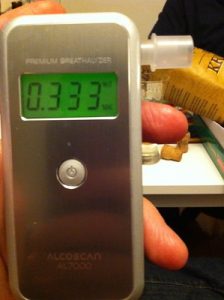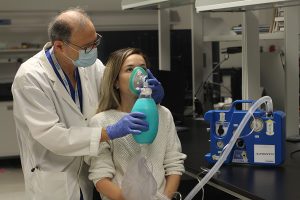With regards to alcohol, many of us have previously reached the so-called point of no return: a moment where the pleasant buzz is replaced by a throbbing headache (and massive amounts of regret). If only there was a simple way to quickly sober up…

Alcohol! Source: awee_19, Flickr
A simple overview of ethanol breakdown
First, let’s dive into how our bodies break down alcohol. Once ethanol arrives at the stomach and intestines, it is absorbed into the bloodstream. From there, most of the alcohol ends up in the liver. The liver is responsible for detoxifying 90% of the ethanol that we consume; the remaining 10% is eliminated through sweat, urine, and breath.
However, the rate at which the liver breaks down ethanol is zeroth-order: meaning that the breakdown rate is always constant, no matter how much ethanol is in your system. This explains why we haven’t been able to develop techniques to speed up the rate of ethanol breakdown in our livers.
Naturally, the next step would be to see whether we can speed up the elimination of the remaining 10% of ethanol in our bloodstreams. Turns out, we can! Remember how we said that some ethanol is breathed out? This works the same way that we exhale carbon dioxide: diffusion! Since the ethanol concentration in our bloodstream is higher than in the air that we breathe in, some ethanol diffuses into our lungs and we breathe it out!
Diffusion Explained.
Source: Free Animated Education, YouTube

A breathalyzer uses the fact that we breathe out ethanol to determine our blood alcohol concentration (BAC). Source: Dave Shea, Flickr
So can I just hyperventilate until I start to feel sober?
In theory, you could… but you really shouldn’t. Hyperventilating will reduce your ethanol levels, sure, but it will also decrease your CO2 levels: causing your brain’s blood vessels to narrow, and ultimately depriving your brain of oxygen. Thankfully, a recent study has found a simple and effective solution, utilizing isocapnic hyperpnea.
Isocapnic hyperpnea: what is it?
To put it simply, isocapnic hyperpnea (IH) is when you deeply (sometimes rapidly) breathe in air that has an equal concentration of carbon dioxide as in your bloodstream. This lets you breathe out all the nasty ethanol, while your CO2 levels stay steady. In the study, participants drank vodka, then were connected to a device which supplied air which had a CO2 concentration similar to what would be found in normal blood vessels. The results of the study showed that the participants who underwent IH were able to get ethanol out of their system more than three times faster than participants who breathed regular air!

A demonstration of the IH apparatus. Source: UHN
This technology could be widely available in the near future, since IH has already been approved as a treatment for clearing our bodies of other chemicals. IH could help paramedics in clearing the alcohol out of a patient’s system in a timely manner, which could ultimately save their lives. Remember to always drink responsibly!
– Sam Jung
